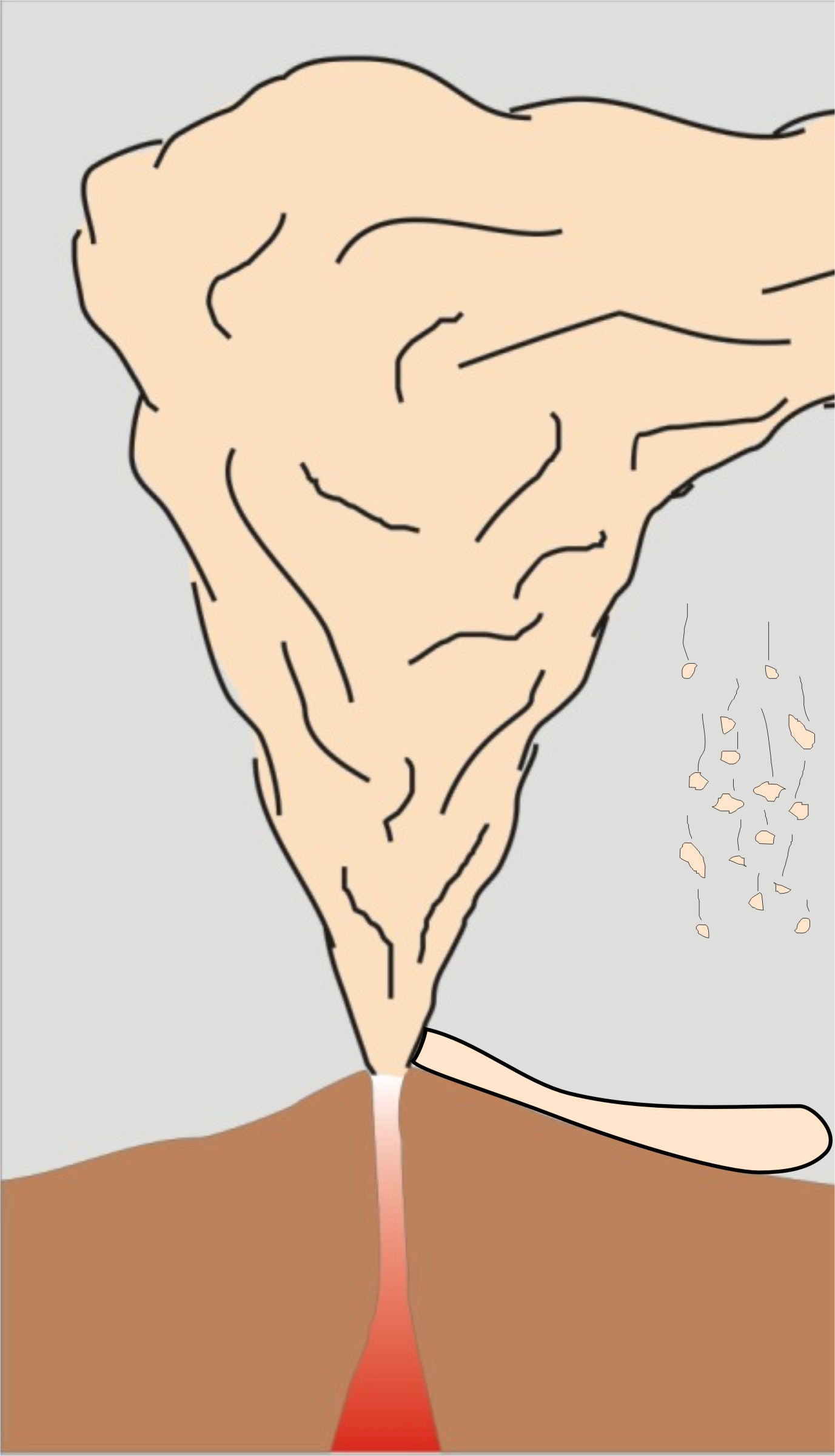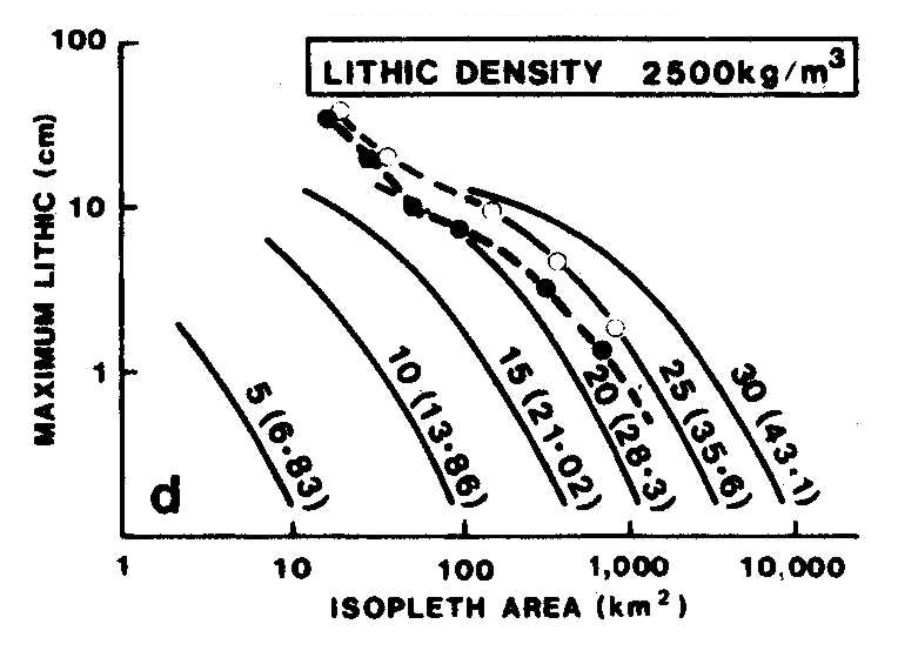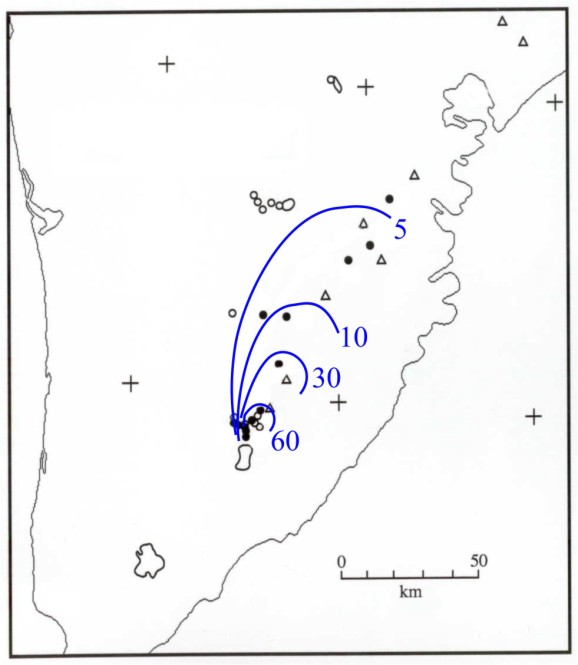
Sedimentation
Volcanic plumes do not stay in the atmosphere forever. In fact as soon
as the turbulent eddy velocity is no longer greater than the fall velocity
for a particle, the particle will fall. Knowing how, when, and where
these particles fall is very important in that the deposits from eruptions
are the only record we have of prehistoric eruptions.
Not surprisingly, larger particles fall earlier than small particles. Carey and Sparks (1986) do a very good job of quantifying this observation. Their work allows column heights to be reconstructed from lithic isopleth maps -- maps showing contours of maximum particle size. Lithic particles are used because settling or fall velocity depends greatly on particle density, and lithic partilces are nearly always ~2.5 g/cm^3, whereas pumices can range in density from <0.7 to 2.5 g/cm^3 to Additionally, their work allows for a reconstruction of wind speed during deposition.
In order to determine how high the column went, compare the area for a particular isopleth (a contour of particle size) with the figure below.


The effects of wind on ispleth distributions can be profound
TO the left is an isopleth map of the Main stage of the Ksudach KS1 eruption. a column 30-35 km high produced these deposits. Contours are in cm.
In the figures below, Carey and Sparks (1986) model the effects a 10, 20, and 30 m/s wind from the left on a plume with a buoyant height, Hb, of 30 km.



